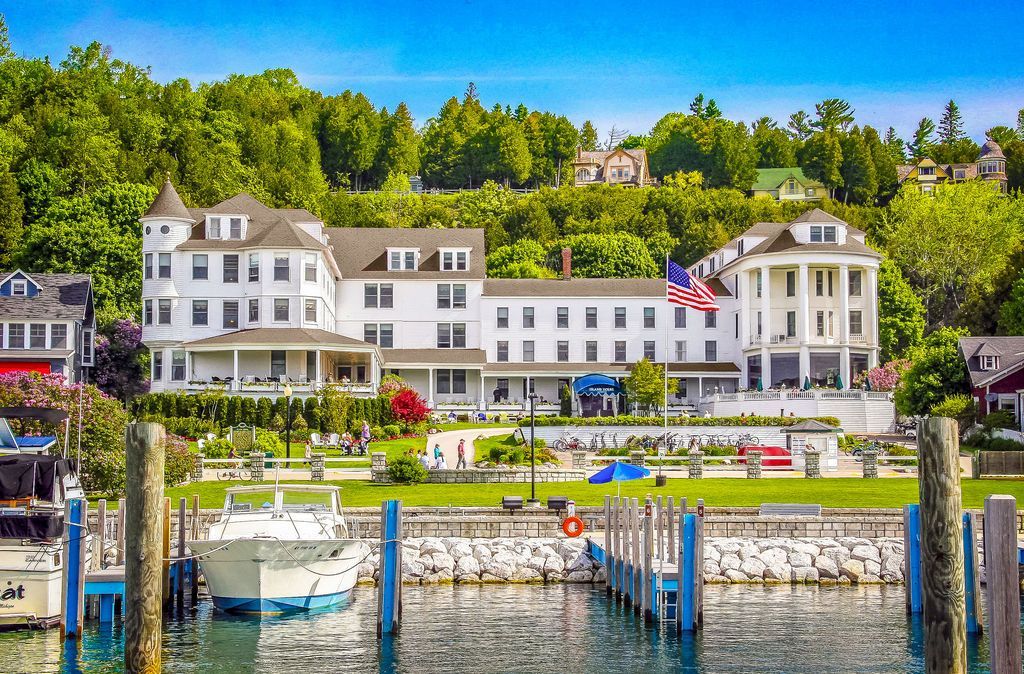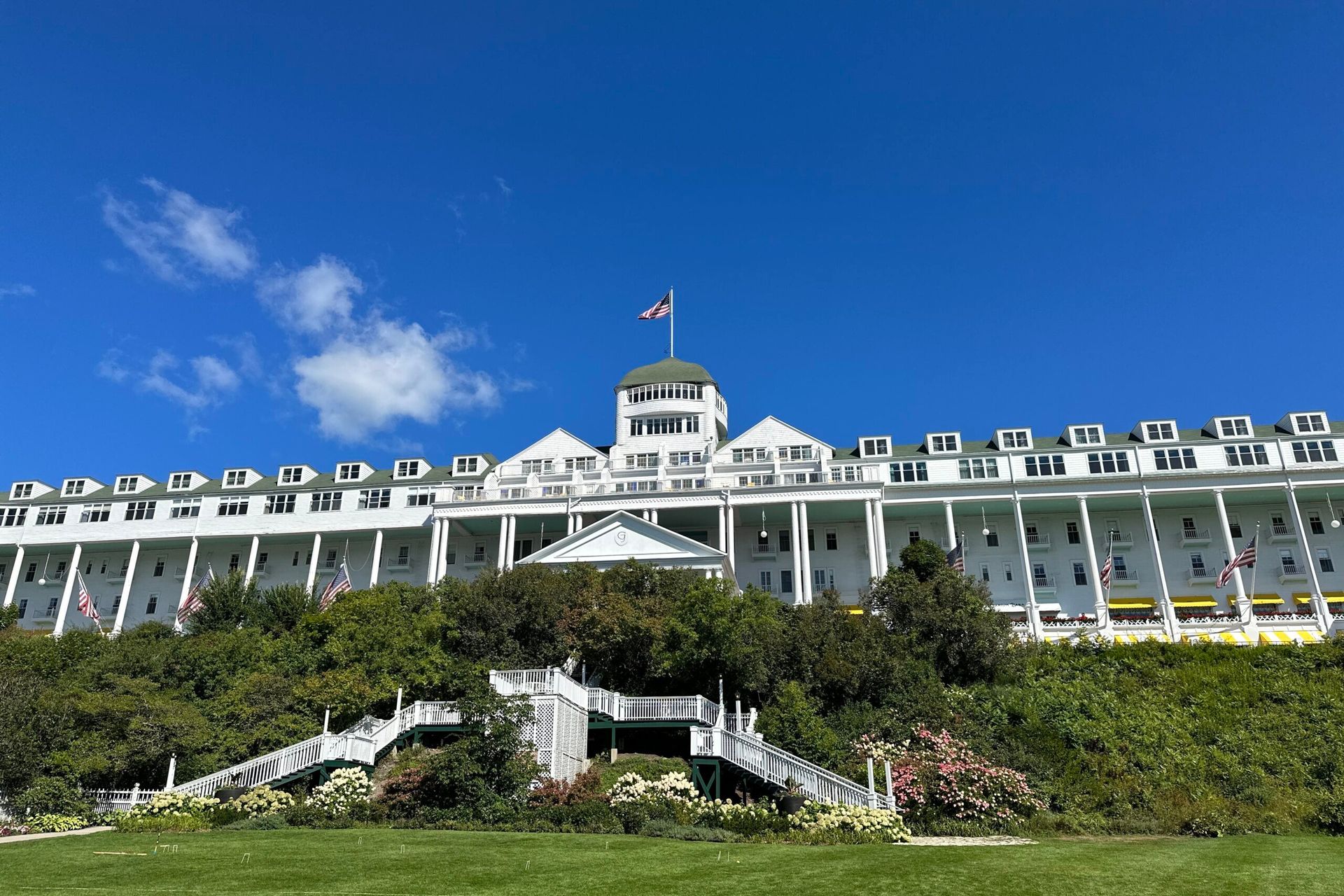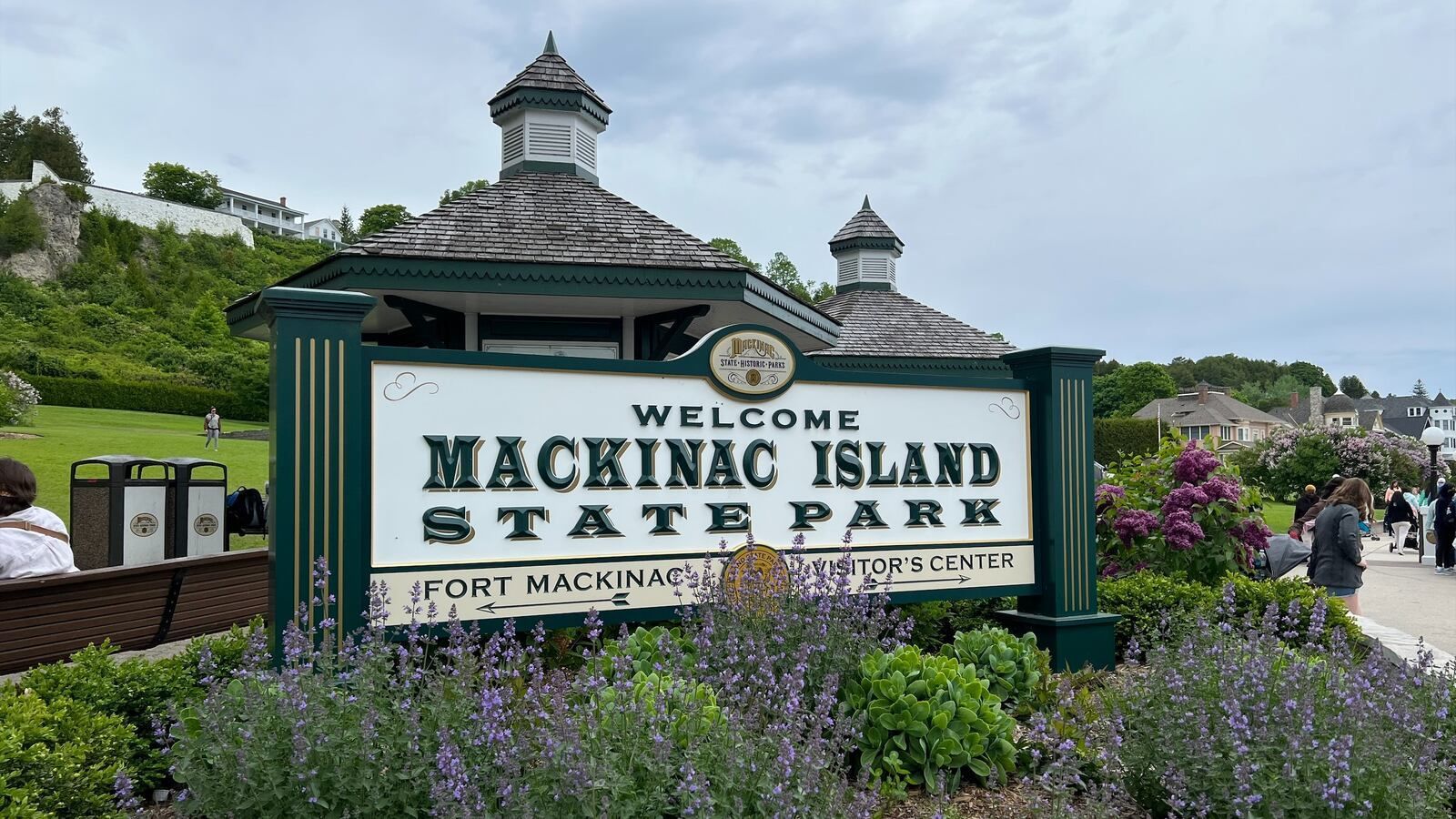Mackinac Island
Historical Overview:
Mackinac Island's history is deeply intertwined with the indigenous people who originally inhabited the region. Native American tribes, particularly the Odawa, Ojibwe, and Potawatomi, considered the island a sacred place long before European settlers arrived. In the 17th century, European explorers and fur traders, including those from France and Great Britain, began to establish a presence on the island. Strategic in its location, Mackinac Island served as a vital hub for the fur trade, contributing to its early economic importance.
The island's historical significance is notably highlighted by the well-preserved buildings and structures that dot its landscape. Fort Mackinac, situated atop a limestone bluff, offers a glimpse into the military history of the region. Originally built by the British during the American Revolution, the fort has changed hands multiple times between British and American forces. Today, it stands as a living history museum, where visitors can explore period-dressed interpreters, exhibits, and demonstrations, providing an immersive experience of life during the 18th and 19th centuries.
Transportation and Unique Atmosphere:
What sets Mackinac Island apart is its transportation system, or rather, the absence of motorized vehicles. The island bans cars, creating a serene and peaceful environment. Visitors primarily travel by horse-drawn carriages, bicycles, and on foot. This unique feature not only preserves the island's historic charm but also enhances the overall visitor experience. The clip-clop of horse hooves on the cobblestone streets becomes a soothing soundtrack, immersing visitors in a bygone era.
Ferries provide the main mode of transport to Mackinac Island from the mainland. The short but scenic journey across the Straits of Mackinac offers breathtaking views of the Mackinac Bridge, one of the longest suspension bridges in the world, connecting Michigan's Upper and Lower Peninsulas.
Grand Hotel:
One of the island's most iconic landmarks is the Grand Hotel, a symbol of luxury and elegance. Opened in 1887, the Grand Hotel has welcomed guests with its striking architecture and old-world charm. The 660-foot-long front porch, the world's longest, invites visitors to relax in rocking chairs while enjoying panoramic views of the Straits of Mackinac. The interior is equally impressive, featuring opulent decor, exquisite dining options, and a sense of refined hospitality.
While visitors can explore the Grand Hotel's public areas, including the iconic porch, dining at the hotel's restaurants is traditionally reserved for overnight guests. The hotel has maintained a dress code, contributing to the establishment's timeless and exclusive atmosphere.
Scenic Beauty and Outdoor Activities:
Mackinac Island's natural beauty is a major draw for tourists. The island is blessed with picturesque landscapes, including lush forests, limestone bluffs, and scenic shoreline. Arch Rock, a natural limestone arch standing 146 feet above the ground, is one of the island's most photographed landmarks. Visitors can reach this geological wonder by hiking, biking, or taking a horse-drawn carriage ride.
Outdoor enthusiasts will find a plethora of activities to indulge in, from exploring the island's numerous trails to horseback riding along scenic paths. The eight-mile loop around the island provides breathtaking vistas of Lake Huron and the surrounding areas. Biking is a popular way to navigate the island, with rentals available for visitors to explore at their own pace.
Mackinac Island State Park:
Comprising over 80% of the island's 3.8 square miles, Mackinac Island State Park offers a wealth of natural and historical attractions. With over 70 miles of hiking, biking, and horseback riding trails, the park provides ample opportunities to explore the island's diverse ecosystems. The park also includes several historic sites, such as British Landing, Arch Rock, and Skull Cave, each offering a glimpse into the island's storied past.
Fudge Capital of the World:
Mackinac Island has earned the title of the "Fudge Capital of the World." Fudge shops, with their sweet aroma wafting through the air, are a common sight along the bustling streets of the island. The tradition of fudge-making on Mackinac Island dates back to the late 19th century, and today, visitors can witness the craftsmanship of this delectable treat in numerous candy stores.
The process of making Mackinac Island fudge involves a unique technique of hand-paddling the mixture on marble slabs. This method results in a creamy and smooth texture, distinguishing it from other types of fudge. Popular flavors include classic chocolate, vanilla, and creative combinations like peanut butter chocolate.
Festivals and Events:
Mackinac Island hosts various festivals and events throughout the year, adding an extra layer of vibrancy to the island's charm. The Lilac Festival, held in June, celebrates the blooming of the island's fragrant lilac bushes. The Grand Hotel's Somewhere in Time Weekend, an event that transports participants back to the elegance of the Edwardian era, is a unique and beloved tradition.
Other events include the Mackinac Island Fudge Festival, the Mackinac Island Art Festival, and the Mackinac Island Music Festival, each offering visitors a chance to immerse themselves in the island's cultural and artistic scene.
Accommodations and Dining:
In addition to the Grand Hotel, Mackinac Island offers a range of accommodations, from historic inns and bed-and-breakfasts to modern hotels. The island's lodging options cater to various preferences and budgets, ensuring that visitors can find a comfortable and charming place to stay.
Dining on Mackinac Island is a delightful experience, with restaurants showcasing a mix of local flavors and international cuisine. From casual eateries serving fresh seafood to upscale dining establishments with panoramic views, the culinary scene caters to diverse tastes. Many establishments pride themselves on incorporating locally sourced ingredients, contributing to the island's commitment to sustainability.
Mackinac Island, with its rich history, timeless charm, and breathtaking landscapes, stands as a testament to the beauty of Michigan's natural and cultural heritage. Whether exploring the historic sites, indulging in world-famous fudge, or simply enjoying the unhurried pace of life, visitors to Mackinac Island are treated to an unforgettable experience. The island's commitment to preserving its unique character and offering a retreat from the modern world makes it a cherished destination for those seeking a step back in time, enveloped in the magic of Mackinac.



